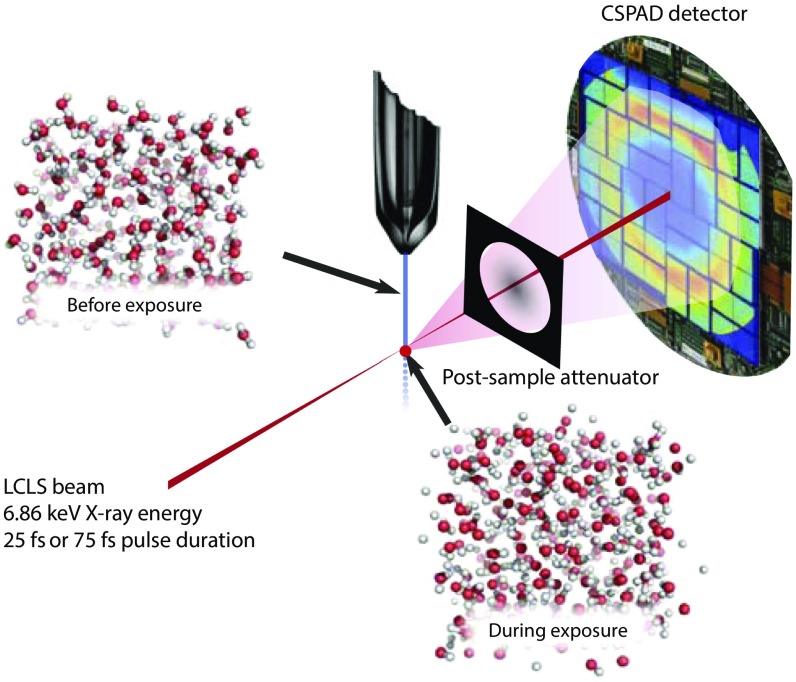Fig. 1.
A narrow jet of room temperature water was injected using a GDVN into the 200 nm X-ray focus of the CXI end station of the LCLS. Diffraction patterns from single pulses were recorded on a CS-PAD detector with a postsample attenuator made of a Tungsten alloy film positioned downstream of the sample. The scattered signals from pulses of short (25 fs) and long (75 fs) duration were processed and analyzed. A combination of NLTE modeling and MD simulations was used to follow the dynamics of the atoms during the exposure to intense X-ray radiation. Upper Left and Lower Right depict the broken bonds found in the simulations. The water transitions into a warm dense matter state during the pulse and leads ultimately to a local explosion of the water jet (12).

